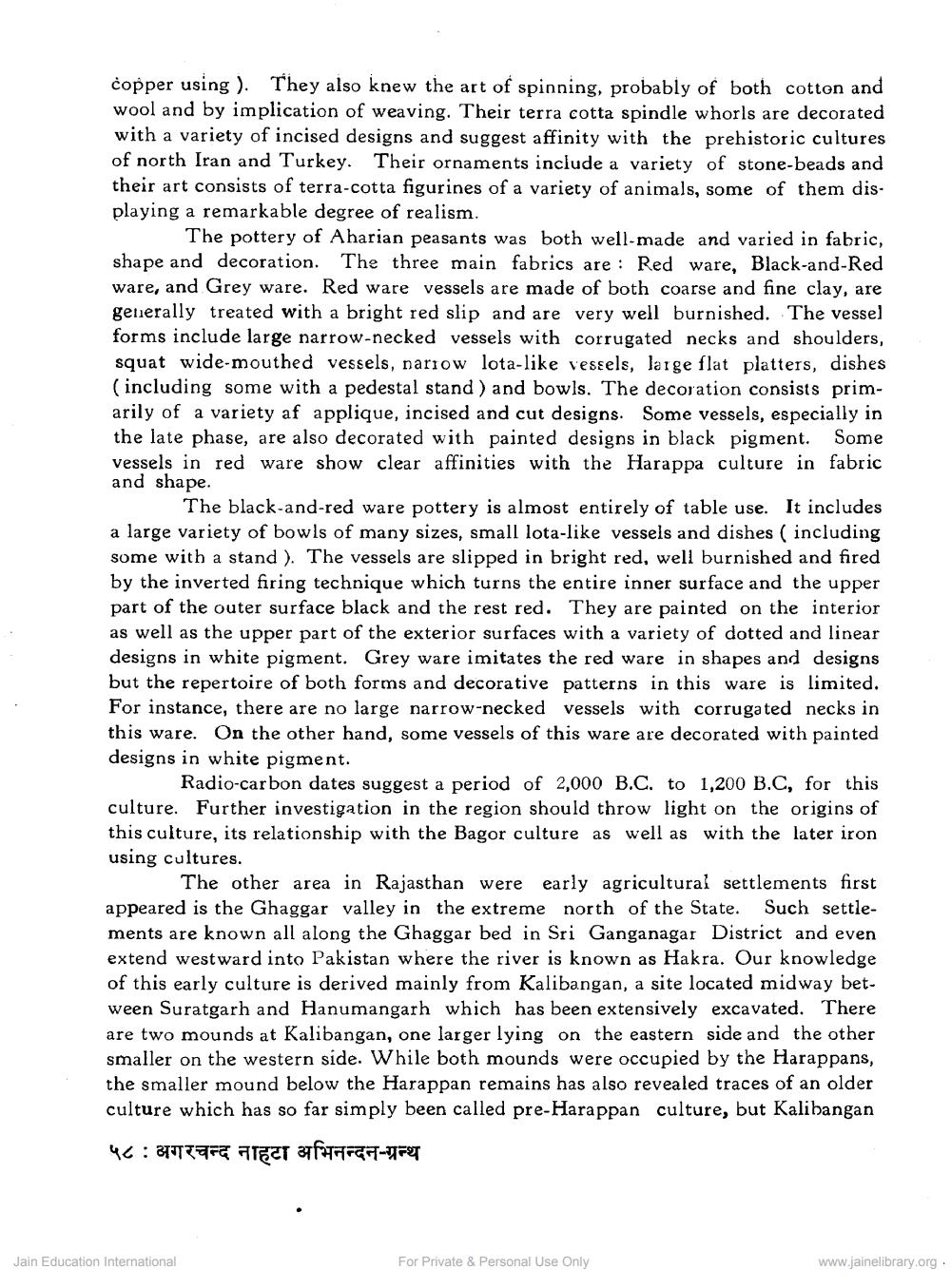________________
copper using ). They also knew the art of spinning, probably of both cotton and wool and by implication of weaving. Their terra cotta spindle whorls are decorated with a variety of incised designs and suggest affinity with the prehistoric cultures of north Iran and Turkey. Their ornaments include a variety of stone-beads and their art consists of terra-cotta figurines of a variety of animals, some of them displaying a remarkable degree of realism
The pottery of Aharian peasants was both well-made and varied in fabric, shape and decoration. The three main fabrics are : Red ware, Black-and-Red ware, and Grey ware. Red ware vessels are made of both coarse and fine clay, are generally treated with a bright red slip and are very well burnished. The vessel forms include large narrow-necked vessels with corrugated necks and shoulders, squat wide-mouthed vessels, narrow lota-like vessels, large flat platters, dishes (including some with a pedestal stand) and bowls. The decoration consists primarily of a variety af applique, incised and cut designs. Some vessels, especially in the late phase, are also decorated with painted designs in black pigment. Some vessels in red ware show clear affinities with the Harappa culture in fabric and shape.
The black-and-red ware pottery is almost entirely of table use. It includes a large variety of bowls of many sizes, small lota-like vessels and dishes (including some with a stand). The vessels are slipped in bright red, well burnished and fired by the inverted firing technique which turns the entire inner surface and the upper part of the outer surface black and the rest red. They are painted on the interior as well as the upper part of the exterior surfaces with a variety of dotted and linear designs in white pigment. Grey ware imitates the red ware in shapes and designs but the repertoire of both forms and decorative patterns in this ware is limited. For instance, there are no large narrow-necked vessels with corrugated necks in this ware. On the other hand, some vessels of this ware are decorated with painted designs in white pigment.
Radio-carbon dates suggest a period of 2,000 B.C. to 1,200 B.C, for this culture. Further investigation in the region should throw light on the origins of this culture, its relationship with the Bagor culture as well as with the later iron using cultures.
The other area in Rajasthan were early agricultural settlements first appeared is the Ghaggar valley in the extreme north of the State. Such settlements are known all along the Ghaggar bed in Sri Ganganagar District and even extend westward into Pakistan where the river is known as Hakra. Our knowledge of this early culture is derived mainly from Kalibangan, a site located midway between Suratgarh and Hanumangarh which has been extensively excavated. There are two mounds at Kalibangan, one larger lying on the eastern side and the other smaller on the western side. While both mounds were occupied by the Harappans, the smaller mound below the Harappan remains has also revealed traces of an older culture which has so far simply been called pre-Harappan culture, but Kalibangan
५८ : अगरचन्द नाहटा अभिनन्दन-ग्रन्थ
Jain Education International
For Private & Personal Use Only
www.jainelibrary.org




